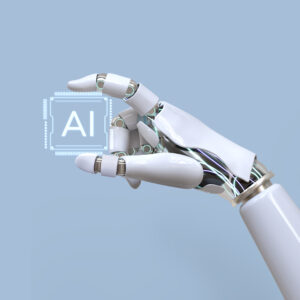Written by Petros Magkos, electrical engineer at Wattcrop.
As the world embraces the transition to renewable energy sources, integrating cutting-edge technologies becomes increasingly essential. Among these technologies, Artificial Intelligence (AI) emerges as a powerful tool, playing a pivotal role in revolutionizing renewable energy systems. In particular, AI’s impact is profound in the realms of smart grids and predictive maintenance, driving efficiency, reliability, and sustainability in the renewable energy sector.
Integrating Artificial Intelligence into Smart Grids
The integration of artificial intelligence in future smart grids has the potential to offer significant solutions for their more efficient operation.
One of the most important and widespread uses of artificial intelligence is to facilitate dynamic demand response in the context of smart grids. Through real-time data analysis, predictive algorithms anticipate changes in energy consumption patterns. They also create better insight into when renewable energy sources are available or when their production is required, enabling flexible resource management. This demand response and availability forecasting capability allows for efficient peak load balancing preventing energy waste and supporting sustainable grid operation.
Another key role of this technology is the ability of AI to detect errors and anomalies in the network and change the facts about the reliability of the network. By thoroughly examining data, such as previously collected data on performance and outages, they allow for the proper identification of potential problems and whether intervention is needed to resolve them before they escalate. This predictive approach minimizes downtime, enhances grid resilience, and ensures a more stable energy supply.

Maximizing Efficiency of Renewable Energy Systems
Renewable energy systems, such as wind turbines and solar panels, benefit greatly from predicting their maintenance using artificial intelligence. Through continuous monitoring of sensor data, AI algorithms predict potential equipment failures. This proactive approach allows for timely maintenance and ensures optimal system performance. Also, predictive maintenance using AI technologies significantly reduces downtime in renewable energy systems by addressing potential issues before they lead to failures. This proactive approach not only improves the reliability of renewable energy sources but also contributes to the overall economic viability of these systems.
AI analyzes historical data to identify patterns and optimize the performance of renewable energy systems. By fine-tuning operational parameters, AI maximizes energy production, contributing to increased efficiency and cost-effectiveness. This data-driven optimization is crucial for meeting the growing energy demand sustainably.
Market Price Prediction
AI plays a key role in predicting renewable energy production by analyzing historical weather data, satellite imagery, and other relevant information. This forecasting capability aids grid operators and energy companies in anticipating supply and demand fluctuations as mentioned previously. On the other hand, AI’s analytical prowess extends to predicting energy market prices by analyzing also energy demand, and market trends. This information empowers energy producers and consumers to make strategic decisions regarding energy generation, consumption, and trading. The result is a more dynamic and responsive energy market.
AI is pushing the renewable energy sector into a new era of efficiency, reliability, and sustainability. Its combination with smart grids paves the way for exploiting the new opportunities it offers, reshaping the way we produce, distribute, and consume energy. As technology continues to evolve, the integration of AI into renewable energy will play a key role in addressing global energy challenges and accelerating the transition to a cleaner and more sustainable future.

